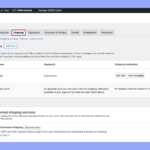Efficiency and organization are paramount in the fast-paced world of logistics and trucking. Truck Tarps are one tool that they use to streamline their operations and protect their cargo.
While there is no universal color-coding system across the industry, using different tarp colors to categorize and manage cargo has become a common, albeit informal, method for improving organization and ensuring workers correctly handle goods.
This article explores how logistics companies utilize tarp colors to protect cargo, organize operations, and enhance efficiency.
The Role of Tarps in the Logistics Industry
Tarps, a crucial tool in the logistics and trucking industry, play a significant role in protecting and securing cargo during transportation.
Tarps, short for tarpaulins, are durable, waterproof materials commonly used to cover and protect cargo during transportation.
In logistics, heavy duty tarps serve multiple purposes, from shielding goods from weather elements to providing security against theft or damage.
Tarps are particularly valuable in the trucking industry, where open trailers and flatbeds are often used to transport goods over long distances.
Choosing the right tarp helps protect cargo and helps maintain its integrity throughout the journey.
Protection from Weather and Environmental Factors
One of the primary functions of tarps in logistics is to protect cargo from weather conditions such as rain, snow, and intense sunlight. Heavy-duty tarps made from materials like polyethylene or vinyl are designed to be waterproof and UV-resistant, ensuring that goods remain dry and undamaged.
This protection is crucial for sensitive cargo, such as electronics, machinery, and perishable goods, which can suffer significant losses if exposed to moisture or extreme temperatures.
Security and Theft Prevention
In addition to weather protection, tarps also secure cargo against theft. By covering the load, tarps obscure the contents from view, making it less likely that potential thieves will target the shipment. Some tarps come equipped with reinforced grommets and straps, allowing them to be securely fastened to the trailer, further reducing the risk of tampering or theft during transit.
The Use of Tarp Colors in Logistics
While tarps are essential for protecting cargo, using colored tarps has added functionality for logistics companies. Although there is no universal standard for tarp colors in the logistics industry, many companies have adopted color-coding systems to help organize and manage their operations more effectively.
No Universal Standard
It’s important to note that the logistics and trucking industries do not follow a universal or standardized color-coding system for tarps. Unlike traffic signals or safety signage, which have consistent color meanings, the choice of tarp color in logistics is often based on company-specific practices. This flexibility allows different companies to use colors that best represent their cargo types or choose colors based on branding or availability, empowering them to adapt their practices to their specific needs.
Company-Specific Practices
Logistics companies may implement their internal color-coding systems to help distinguish between different types of cargo. For example, one company might use:
- Blue tarps for general-purpose cargo such as household goods or retail merchandise.
- Green tarps for agricultural products, landscaping materials, or other eco-friendly cargo.
- Black tarps for high-value or sensitive cargo that require additional discretion and protection.
- Red tarps for hazardous materials, signaling the need for special handling and caution.
- Yellow tarps for construction materials or heavy equipment, ensuring they are easily identifiable.
These color choices are often based on practical considerations, such as visibility, durability, and the specific needs of the cargo being transported. However, the lack of a universal system means that these practices can vary significantly from one company to another.
Practical Considerations
The choice of tarp color can depend on several practical factors, including:
- Visibility: Bright colors like yellow or orange can make cargo more visible, particularly useful for safety in busy loading docks or highways.
- Durability: Certain colors may be associated with more robust, durable materials, making them suitable for heavy-duty use.
- Protection: Darker colors like black or green may offer better protection against UV rays, making them ideal for covering sensitive cargo that sunlight can damage.
Because these decisions are often made at the company level, there is flexibility in how colors are used, allowing logistics companies to tailor their tarp choices to their specific needs and preferences.
Organizational Tooling
Color-Coded Tarps as an Organizational Tool: The use of color-coded tarps in logistics is a flexible tool that can be adapted to various operational needs. For instance, it can be used to identify shipments destined for specific locations, those containing perishable goods, or those requiring special handling, thereby speeding up processes and improving efficiency.
For example, in a busy logistics hub where multiple shipments are being processed simultaneously, color-coded tarps allow workers to quickly identify and prioritize shipments based on the color of the tarp. This system helps reduce the likelihood of mix-ups, ensures that time-sensitive cargo is handled promptly, and streamlines the overall workflow.
Benefits of Using Colored Tarps in Logistics
Practical Benefits of using Colored Tarps in Logistics: Beyond their primary function of protecting cargo, colored tarps offer practical benefits such as improved organization, enhanced safety, and better communication within the supply chain.
Improved Organization
By implementing a color-coding system, logistics companies can improve the organization of their operations. Color-coded tarps make it easier for workers to identify specific types of cargo, reducing the chances of errors during loading, unloading, and transportation. This organizational tool is precious in large-scale operations where multiple shipments are handled simultaneously.
Enhanced Safety
Using colored tarps can also enhance safety in logistics operations. For example, using red tarps to cover hazardous materials is a visual cue that the cargo requires special handling and precautions. This can help prevent accidents and ensure compliance with safety regulations. Similarly, bright-colored tarps can improve visibility in low-light conditions, reducing the risk of accidents during loading and unloading.
Better Communication
Color-coded tarps can facilitate better communication within the supply chain. By establishing a common understanding of what each color represents, logistics companies can ensure that all team members, from warehouse workers to drivers, are on the same page. This shared understanding can lead to more efficient operations and fewer misunderstandings.
Environmental Considerations
In addition to their practical benefits, tarps offer significant environmental advantages, especially when companies choose reusable and durable options. By using high-quality tarps that can be reused for multiple shipments, logistics companies can reduce their reliance on single-use plastics and other disposable materials, demonstrating a commitment to sustainable business practices.
Government and Industry Support for Tarp Use
The use of tarps in logistics is supported by various industry guidelines and government regulations. For example, the Federal Motor Carrier Safety Administration (FMCSA) provides rules on the securement of cargo, which includes using tarps to prevent cargo from shifting or falling off during transit. These regulations underscore the importance of tarps in maintaining safety and compliance in the trucking industry.
Additionally, the Occupational Safety and Health Administration (OSHA) offers guidelines on using tarps to protect workers from exposure to hazardous materials, further highlighting their role in promoting safety in logistics operations.
Conclusion
While there is no universal standard for tarp colors in the logistics industry, using colored tarps remains a valuable tool for organizing, protecting, and managing cargo. Logistics companies often develop their color-coding systems based on practical considerations and company-specific needs. These systems enhance organization, improve safety, and streamline communication within the supply chain.
As logistics operations continue to evolve, the role of tarps—particularly colored tarps—will likely expand, offering new ways to optimize efficiency and protect valuable cargo. By understanding and utilizing the benefits of tarps, logistics companies can ensure their operations run smoothly, safely, and effectively.






